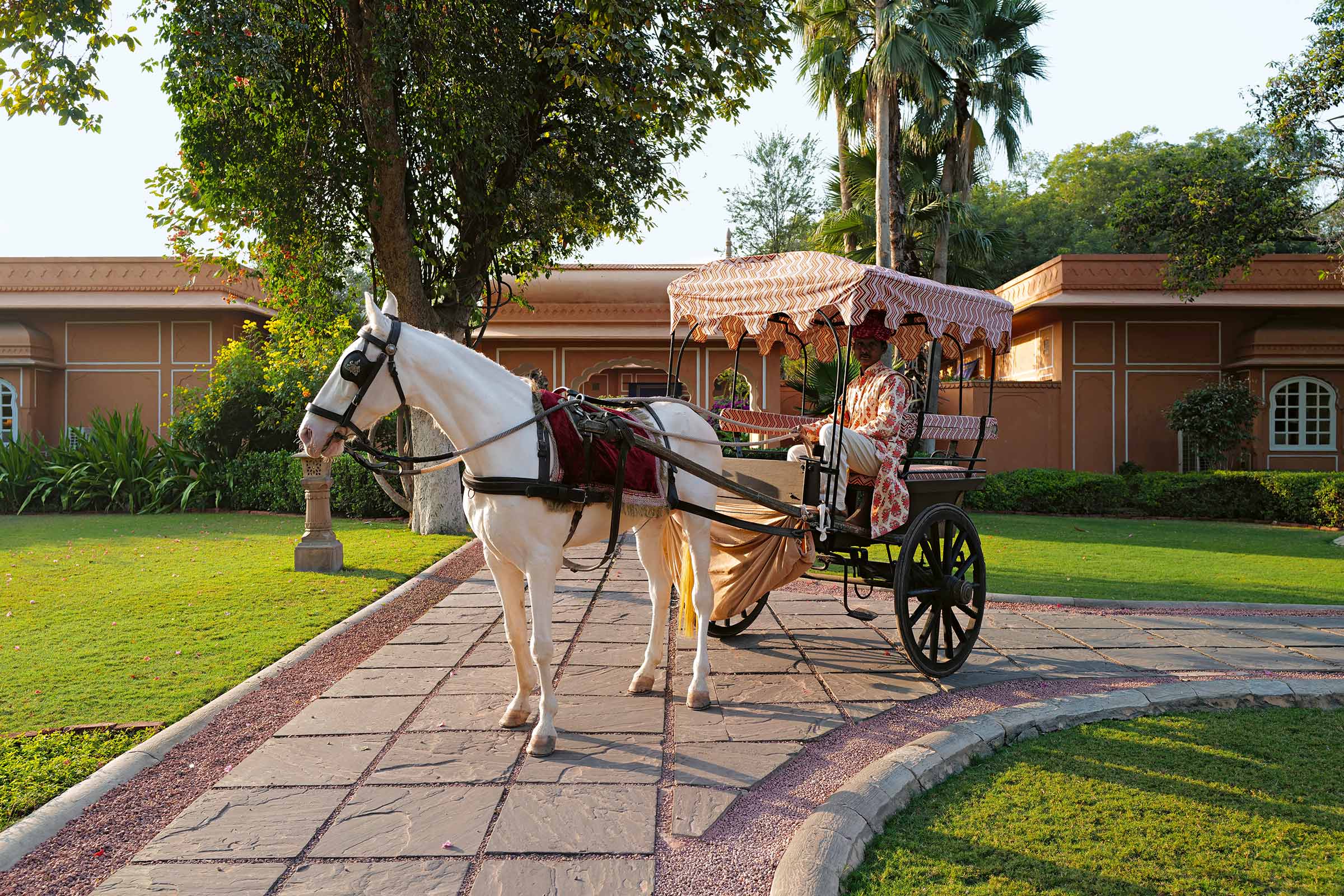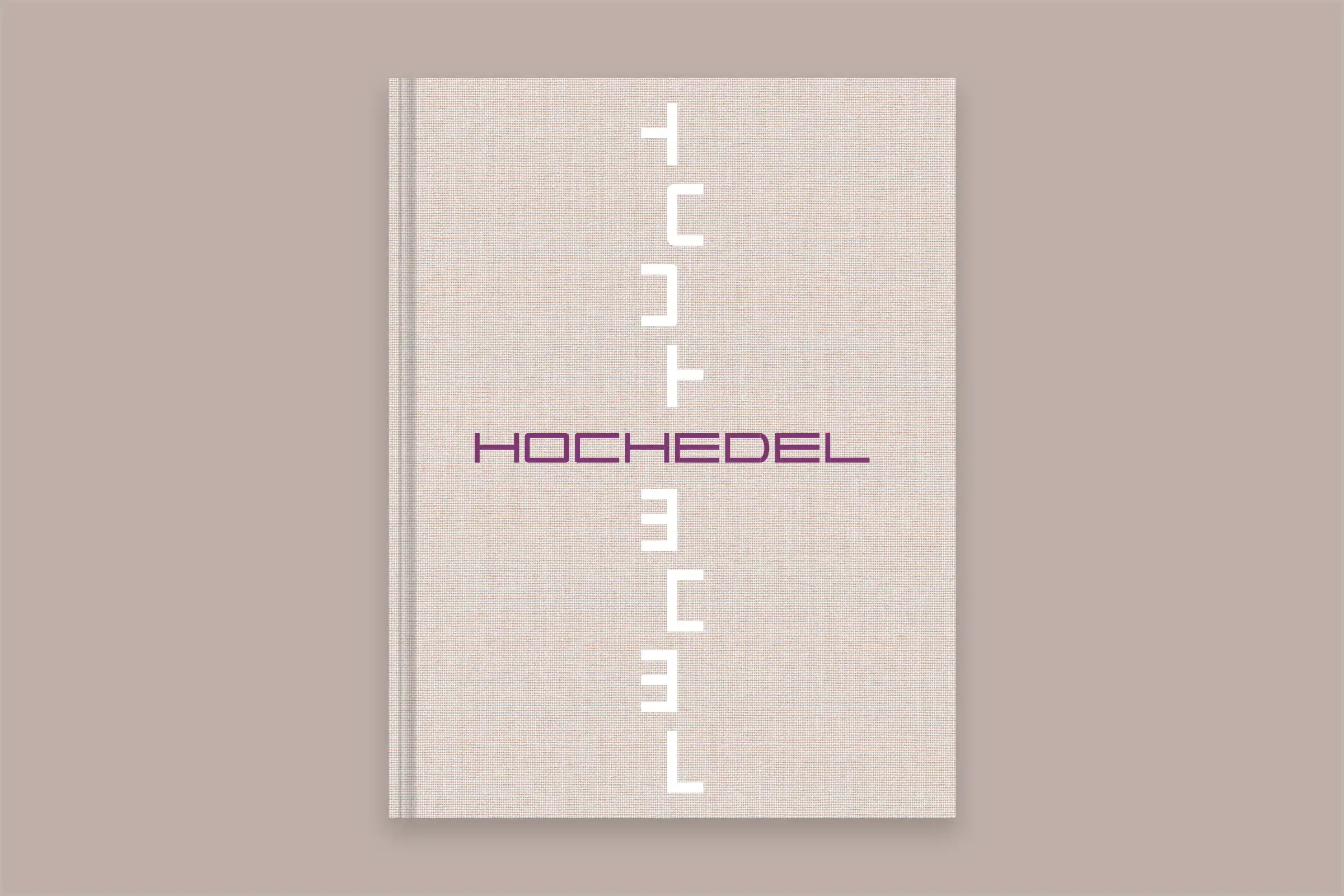
According to the DESA Report of the United Nations Organisation, Delhi is the second largest metropolis in the world, after Tokyo, which inevitably conjures up an image of throngs of people and hustle and bustle. All the lovelier, then, that on first arrival I notice that everything is totally relaxed in New Delhi. This certainly has something to do to the fact that the capital city itself only has around 250,000 residents. After checking into the Oberoi Gurgaon – where I am greeted with a modern ambience: glass, mirrored elements and green on the facades – I want to get to know the city better, so I save my visit to the restaurant of this five-star hotel, where you can enjoy a drink in the lounge-on-the-water, until later. My first destination is the centrally located India Gate, one of New Delhi’s most important attractions. Recognisably designed according to the French original and surrounded by green parks, this Arc de Triomphe located on a star-shaped square, is a popular destination for tourists and locals alike – fulfilling all tourist expectations with its souvenir vendors, tuk-tuks and food stalls serving up curries and naan bread. The historic step well Agrasen Ki Baoli, an impressive staircase construction dating back to the 14th or 15th century, is also located in the central government district. This technical masterpiece was formerly used to collect rainwater. Depending on the water level, residents were able to draw their drinking water from the apropriate tier. Today, it’s a popular meeting place, particularly among young Indians. I find them to be friendly and approachable. I was often asked if I would like to have my photo taken with them. For rupees? No, just for fun.





How long have we been driving? We’ve been in the car for around four hours, since we set off towards Agra, south-east of Delhi. Naturally our first destination is the Taj Mahal. It’s the true landmark of India that you just have to visit. It’s pleasantly warm in December in India’s most-visited city on the Yamuna River: the temperature now, in the early morning, is around 25 degrees. The monumental mausoleum is cast in a misty haze, radiating an evocative atmosphere you could almost describe as magical. A little in awe, I walk around the temple and outside gardens, which the Great Mogul Maharaja Shah Jahan had built for his deceased wife Mumtaz Mahal. The intricately detailed marquetry work in the facades reveals Agra’s history as a centre of craftsmanship. With fabulous impressions and photos in my luggage, I look forward to some relaxation in the Oberoi Amarvilas. We’re there in just a few minutes, because this sophisticated luxury hotel is the closed there is to the Taj Mahal. And in terms of architecture and style, it is worthy of its celebrated neighbour: Enchantingly appointed gardens with terraces, pools and open pavilions surround the main building. Indoors, a majestic elegance unfolds in which it is easy to imagine that you are a Maharaja. What else does Agra offer? Further UNESCO cultural treasures such as the Red Fort or the former mogul town of Fatehpur Sikri with its palace complexes and mosque. Away from the palace setting, life is primarily simple and rustic. Mopeds clatter down streets bustling with activity; the juice from sugar cane flows out of rusty presses. That’s India.




Apparently 10 million Indians go to the cinema every day. Perhaps to see one of the Bollywood movies filmed here: Jaipur is a popular location for filming. After a short flight, we arrived in this city with a population of 3 million, keen to discover the most fascinating sides to this cinematic metropolis. Our tour begins in the old town, known as “Pink City” – a name which makes sense as soon as you cast eyes on the brick-red opulent city palace. The architecture is magnificent; the gardens are open to the public apart from one section where the Jaipur royal family still live. Things continue in a colourful way: As well as fruit and vegetables, colourful blossoms in enormous jute sacks are offered at the flower market; they are sold exclusively in these containers – people decorate with flowers a lot here. Flower decorations are used for necklaces and tables, for entire paths and beds. Flowers that remain unsold are given as energy food to the cows, who are regarded as holy and are therefore venerated in India. If work animals are required, they use horses and elephants. The latter are also elaborately painted and used as a means of transport, such as on the path up to Fort Amber. This powerful citadel which lies on a ridge of the Aravalli Mountain, was an independent kingdom in the 16th century. Here too, the impressive power and splendour of its previous rulers is revealed: Arcades, staircases, balconies, gardens and squares decorate the imposing complex. Later, as I sit at a table decorated with flowers on the terrace of the Oberoi Rayvilas Hotel, surrounded by cultivated gardens and warm lights, I too feel regal – and almost as if I am in the scene of a film.




Actor Roger Moore has already been there; his colleague Judi Dench too, and singer Bryan Ferry. Not forgetting the Hollywood producers Jeffrey Silver and Bob Cooper, fashion designer Tory Burch and the CEO of Christian Dior Couture, Pietro Beccari. They have all been inspired by the colours and patterns, fashion, furnishings and accessories of the small handicraft shop “Ganesha Handicraft Emporium” in the centre of Udaipur. Art and handicraft can be found all over the city, starting with the basket weavers and jewellery stalls in the streets to the temples and edifices that still bear witness to Udaipur’s illustrious past as the capital of the Kingdom of Mewar. The magnificent city palace is without doubt Udaipur’s most dominant landmark. It stretches out on the shores of Lake Pichola like a glowing creamy white castle. Staircases and terraces prevail over the sloping terrain, leading to the lofty palace buildings with towers and domes. Here again, India lives from the magic of its history; here again, you miss a culture of modern times – new buildings are mostly faceless and not very attractive. My accommodation is a pleasant exception to this, however: The Oberoi Udaivilas proves once again that the brand deserves its place in the league of leading luxury hotels, and is possibly the leader in India. On what do I base my opinion? On its location on a green hill from where you can enjoy a fabulous view of the lake. On my suite adjacent to a private pool area. On its culinary offering with great Indian cuisine. And on the friendly, discreet service.


Clack, clack. That’s the typical sound of wood on leather. In the large open space of Shivaij Park, people meet on Sundays to play cricket. This, like the red double decker buses, is one of the traditions that stems from India’s British past. Today, I’m out and about alone in a really fascinating city, armed with my camera to record the many impressions I see. Mumbai, formerly Bombay, is India’s most important harbour city and a special place, particularly due to its geographical location: Located on a peninsula, it protrudes into the Arabian Sea and is surrounded by kilometres of beaches, along which you can stroll on well-kept promenades, enjoying the sea view. As it is the sixth largest metropolis in the world, I was expecting modern office towers and glitzy business centres – but not at all: Grey skyscrapers characterise Mumbai’s silhouette and are home to even the most renowned companies. Fortunately, the splendour of Mumbai’s illustrious past – the Gateway of India or the magnificent Municipal Corporation Building – and the vibrant flair of the city centre make up for everything. However I did find a building that is new, modern and wonderful: The Oberoi Mumbai welcomes you in magnificent style. The impressive foyer is located on an elevated floor and opens upwards into a huge atrium. My elegant suite not only gleams with its elegant furnishings and ensuite bathroom but also with its panoramic sea view from the bed. The restaurant offers design, delicious cuisine and choice wines. All in all, I can definitely recommend a journey through northern India – even for more than eleven days.





Enchanting Travels – www.enchantingtravels.com/de
Individuality, quality and first-class service: That’s the motto for the long-haul offers from Enchanting Travels. This German speciality tour operator puts the personal wishes of the client very much at the centre and develops unique excursions in a total of 40 countries around the globe. Here you receive your dream trip tailored to suit your requirements – always customised and high-quality, always away from the standard touristy and well-worn paths, always in exciting combinations: Whether it’s a luxury hotel, safari lodge, Maharaja palace or well-kept private house; whether it’s nature or culture, active experiences or wellness – Enchanting Travels brings it all together, knows the interesting places and has plenty of secret tips up its sleeve. And following the great success of my eleven-day trip through northern India described here, I can definitely confirm this.





